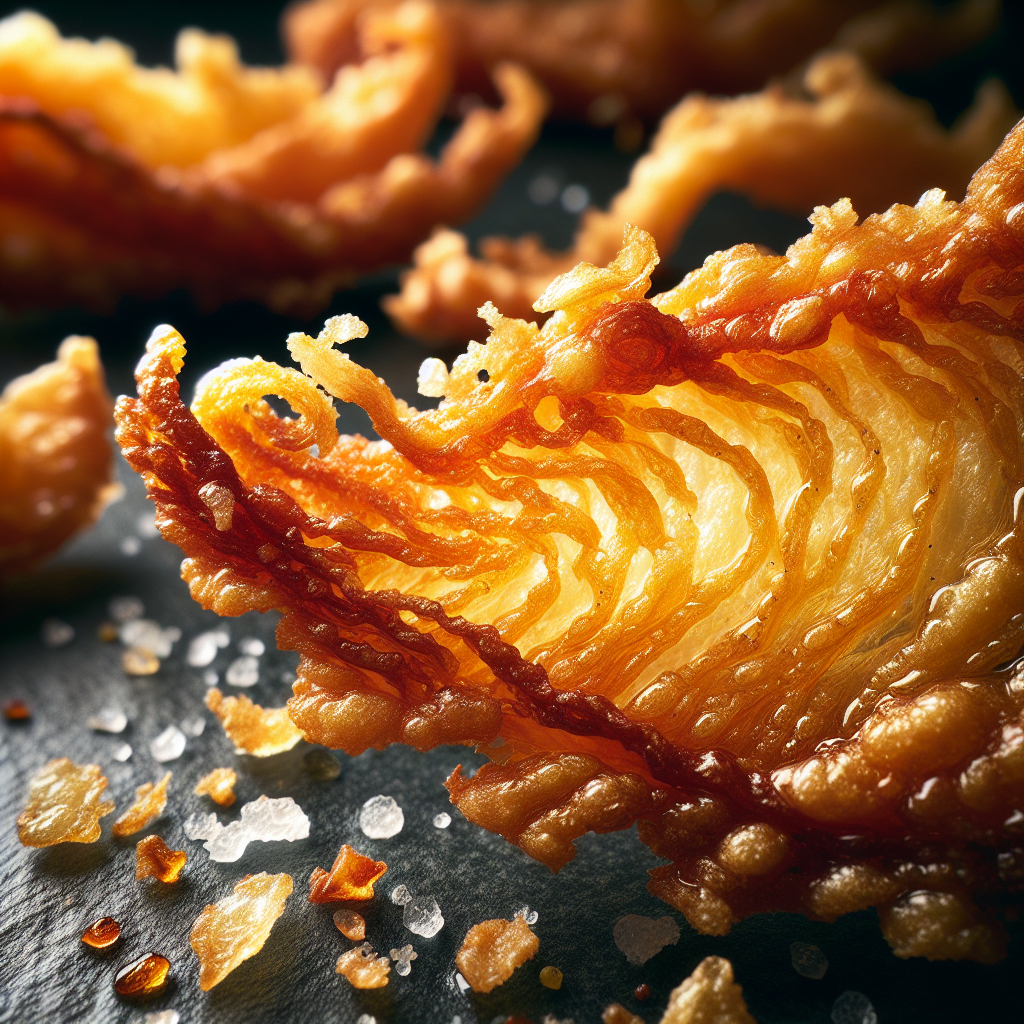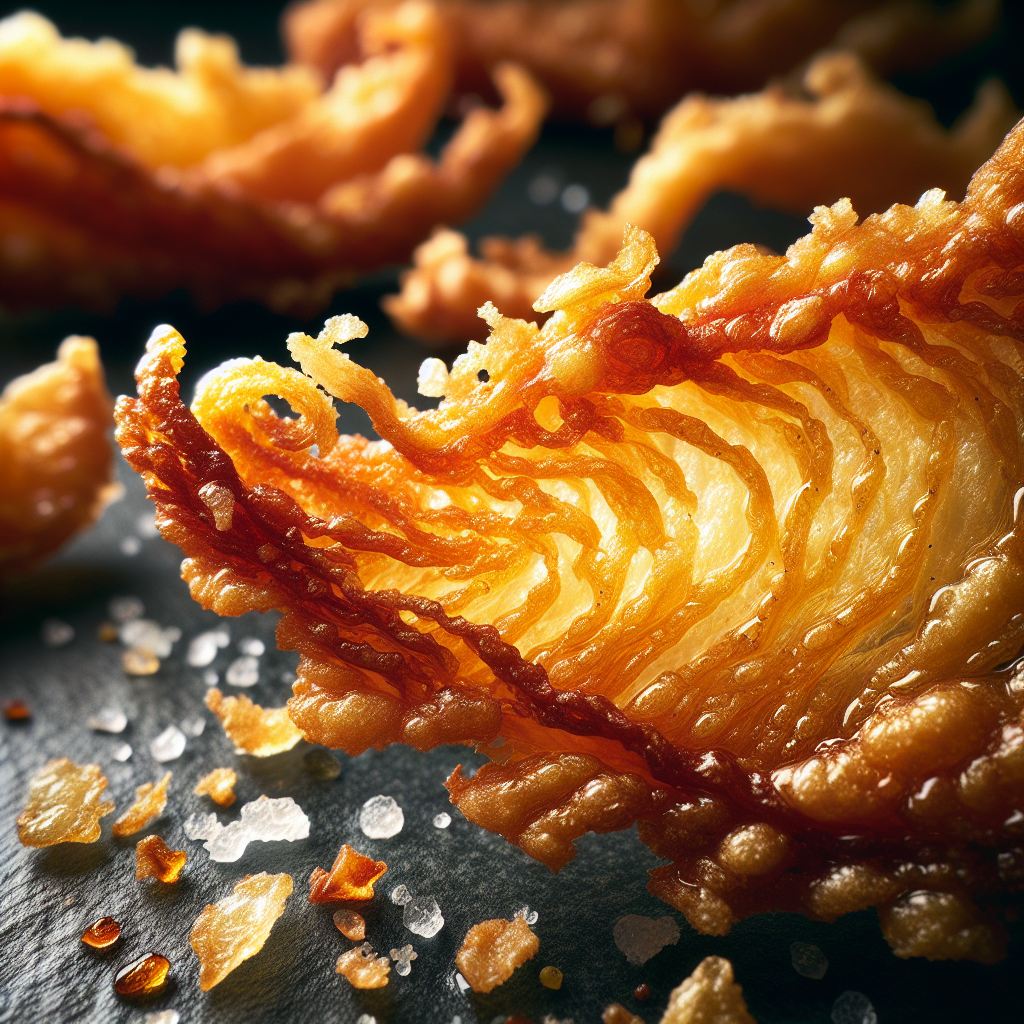If you’ve ever wondered how to achieve that perfect crispy skin on fish, look no further! In this article, we’ll share with you some valuable tips and tricks that will help you achieve the crunchy texture you’ve always dreamed of. Whether you’re a seasoned chef or just starting out in the kitchen, these simple techniques will have you serving up restaurant-quality crispy fish skin in no time. So grab your apron and get ready to elevate your cooking game to new levels of deliciousness!

Get this skillet to fry up your fish dinner (Best Seller)
Choosing the Right Fish for Crispy Skin
When it comes to achieving a perfectly crispy fish skin, choosing the right type of fish is essential. While almost any fish can be cooked to have crispy skin, some varieties are more suitable due to their high-fat content or thin skin.
Fish with High Fat Content
Fish with higher fat content tend to have naturally more delectable and crispy skin. Fatty fish like salmon, mackerel, and trout are excellent choices for achieving that desired crunch. The higher fat content helps in rendering the skin crispy when cooked, providing a satisfying texture and rich flavor.
Fish with Thin Skin
Fish with thin skin also tend to lend themselves well to achieving crispy results. Delicate and thin-skinned fish like sole, snapper, or branzino can be cooked to have an irresistible crispiness. The thin skin allows for quicker cooking and ensures that the skin crisps up beautifully without becoming chewy or rubbery.
Freshness and Quality of Fish
Regardless of the type of fish you choose, ensuring its freshness and quality is paramount. Fresh fish not only tastes better but also has skin that is more likely to crisp up when cooked. When purchasing fish, look for clear eyes, bright and vibrant scales, and a fresh, ocean-like smell. Opting for a reputable fishmonger or a trusted source is a great way to guarantee the quality of the fish for crispy skin perfection.
Preparing the Fish for Crispy Skin
Before diving into the cooking techniques, it’s crucial to properly prepare the fish to maximize its potential for a crispy skin.
Thoroughly Dry the Fish
One of the most important steps in achieving crispiness is to thoroughly dry the fish before cooking it. Moisture on the skin can impede the crisping process, resulting in a less desirable texture. Use paper towels to pat the fish dry, absorbing any excess moisture. Ensuring the fish is as dry as possible will help promote excellent crisping.
Cooking tips from Famous Chefs
Score the Skin
Scoring the skin of the fish can help it crisp up evenly and prevent it from curling during cooking. Use a sharp knife to make shallow diagonal cuts on the skin, being careful not to cut through to the flesh. Scoring also allows any seasonings or coatings to penetrate the skin, further enhancing the taste and texture.
Season the Skin
Seasoning the skin of the fish is vital for adding flavor and enhancing the overall crispy experience. Use your preferred seasoning, such as salt, pepper, or spices, and evenly distribute it over the skin. Allow the seasonings to sit for a few minutes to let them deeply penetrate the fish’s skin and impart their delicious flavors.
Use Cornstarch or Flour Coating
coating the skin of the fish with cornstarch or flour can significantly contribute to achieving an extra-crispy texture. The coating creates a barrier between the skin and the cooking surface, preventing the skin from becoming soggy or sticking. Lightly coat the skin with cornstarch or flour before cooking to help it achieve that desirable crunch when cooked.
Get this skillet to fry up your fish dinner (Best Seller)
Cooking Techniques for Crispy Fish Skin
Once you have prepared the fish, it’s time to explore various cooking techniques that can yield crispy fish skin.
Pan-Frying
Pan-frying is a popular cooking method for achieving crispy fish skin. Start by heating a pan over medium-high heat and adding a small amount of oil with a high smoke point, such as vegetable or canola oil. Place the fish skin-side down in the hot pan and cook it until the skin turns golden brown and crispy, typically for about 4-5 minutes, depending on the thickness of the fish. Flip the fish and continue cooking until the flesh is cooked through. The result is a beautifully crispy fish skin that adds a delightful texture to your dish.
Deep-Frying
Deep-frying is another technique that guarantees an incredibly crispy fish skin. It involves submerging the fish in hot oil, which creates a quick and even cooking process. Start by heating a pot of oil to the desired temperature (usually around 375°F or 190°C). Gently place the fish into the oil and fry until the skin is golden brown and crispy. Remove the fish from the oil, allowing any excess oil to drain off, and place it on a paper towel-lined plate to remove any remaining oil. Deep-frying provides a consistently crunchy skin that is sure to impress.
Grilling or Broiling
Grilling or broiling fish can also yield a crispy skin when executed properly. Preheat the grill or broiler to medium-high heat, and lightly oil the grates or the pan. Place the fish skin-side down and cook until the skin becomes crisp and charred, usually for about 4-6 minutes depending on the thickness of the fish. Flip the fish and continue cooking until the flesh is cooked through. Grilling or broiling the fish not only imparts a smoky flavor but also gives the skin a satisfying crunch.
Tips for Achieving Perfect Crispy Fish Skin
Achieving perfect crispy fish skin requires attention to detail and some essential tips to ensure success.
Cooking tips from Famous Chefs
Preheat the Pan or Grill
Whether pan-frying or grilling, preheating the cooking surface is crucial. Starting with a hot pan or grill ensures that the fish skin is exposed to immediate high heat, which promotes crispiness. A preheated surface allows for faster and more even cooking, resulting in a beautifully crispy skin.
Maintain Even Heat
Consistently maintaining an even cooking temperature is key to achieving crispy fish skin. Fluctuations in temperature can prevent the skin from crisping up evenly or result in overcooking or undercooking. Keep a close eye on the heat source to ensure it stays at the desired temperature throughout the cooking process.
Avoid Overcrowding the Pan
Overcrowding the pan can make it difficult for the fish to crisp up properly. When the fish are too close together, steam can form, hindering crispiness. Allow enough space between each piece of fish to ensure the skin has room to breathe and achieve that desired crunch.
Optimal Cooking Time
Cooking the fish for the appropriate amount of time is vital to achieving the desired texture. Overcooking the fish can lead to burnt skin or dry flesh. Monitor the cooking time carefully and remove the fish from the heat when the skin is golden brown and crispy, ensuring the flesh is just cooked through. Remember, the cooking time may vary depending on the thickness and type of fish.

Enhancing the Flavor and Texture of Crispy Fish Skin
While achieving crispy fish skin is undoubtedly delicious on its own, there are various ways to enhance its flavor and texture even further.
Marinating the Fish
Marinating the fish before cooking can infuse an additional layer of flavor into the skin. Use your favorite marinade or create a simple mixture of herbs, spices, and oil. Allow the fish to marinate for at least 30 minutes, ensuring that the flavors permeate the skin. The marinade will not only add a delicious taste but also contribute to the overall crispiness of the skin.
Adding Herbs and Spices
For an extra burst of flavor, consider adding herbs and spices to the skin. Finely chop fresh herbs like dill, parsley, or thyme and sprinkle them over the skin before cooking. Additionally, a sprinkle of spices like paprika, garlic powder, or cayenne pepper can bring a unique and vibrant flavor to the crispy fish skin.
Using a Citrus Zest
adding a citrus zest to the fish skin can lend a refreshing and tangy flavor. Use a microplane or a fine grater to zest your preferred citrus fruit, such as lemon, lime, or orange, directly onto the skin before cooking. The zest will infuse the skin with a burst of citrusy brightness, enhancing the overall taste and complementing the crispy texture.
Seasoning after Cooking
Seasoning the crispy fish skin with some additional salt or spices immediately after cooking can elevate the flavor even further. Sprinkle a pinch of sea salt, freshly ground black pepper, or your preferred seasoning to enhance the taste and provide a satisfying finishing touch.
Serving and Enjoying Crispy Fish Skin
Once you’ve achieved that perfect crispy fish skin, it’s time to savor and enjoy the fruits of your labor. Here are some tips for serving and enjoying crispy fish skin at its best.
Cooking tips from Famous Chefs
Serve Immediately
Crispy fish skin is at its prime when served immediately after cooking. It retains its delicate crispiness and adds a delightful contrast to the tender fish flesh. Serve the fish skin-side up to showcase its golden brown and crunchy appearance. Enjoy it while it’s still warm and crunchy for the ultimate sensory experience.
Garnish for Added Flavor
To further enhance the flavor and presentation, consider garnishing the crispy fish skin with additional elements. Fresh herbs, such as cilantro or chives, can add a vibrant touch to the dish. A squeeze of citrus juice or a sprinkle of citrus zest can brighten the flavors even more. Get creative and experiment with different garnishes to complement the crispy fish skin and elevate your culinary creation.
Accompaniments for Crispy Skin
Crispy fish skin pairs wonderfully with a variety of accompaniments. Serve it alongside a bed of fresh salad greens or roasted vegetables to create a light and satisfying meal. Alternatively, pair it with steamed rice or crispy French fries for a more substantial and indulgent treat. The crispy fish skin’s incredible texture and flavor can be enhanced by a multitude of side dishes, making it a versatile addition to any meal.
Common Mistakes to Avoid
While mastering crispy fish skin, it’s crucial to be mindful of some common mistakes to ensure optimal results.
Using Frozen Fish
Using frozen fish can negatively impact the crispy skin. Frozen fish tend to retain excess moisture, which can hinder crispiness and result in a less desirable texture. Opt for fresh, unfrozen fish whenever possible to attain that perfect crunch.
Skipping the Drying Step
Skipping the drying step can prevent the skin from achieving the desired crispy texture. Moisture on the skin can create steam, resulting in softer and less crunchy skin. Take the time to thoroughly dry the fish with paper towels before cooking to avoid this mistake.
Using an Inadequate Cooking Oil
Using inadequate cooking oil can significantly impact the crispy results. Choosing an oil with a high smoke point is crucial to prevent burning and to promote crispiness. Oils like vegetable, canola, or peanut oil are ideal choices for achieving that beautiful golden brown and crunchy skin.
Overcooking the Fish
Overcooking the fish can lead to dry flesh and burned skin. While aiming for crispy fish skin, it’s important to monitor the cooking time and remove the fish from the heat when the skin is golden brown and crispy, ensuring the flesh is just cooked through. Keep a close eye on the cooking process to avoid overcooking the fish.
Alternative Techniques for Crispy Fish Skin
While traditional cooking techniques are effective, there are alternative methods that can yield equally delicious and crispy fish skin.
Panko Breadcrumb Coating
Coating the fish skin with panko breadcrumbs can provide an extra layer of crunchiness. Dip the fish in beaten egg or a light batter, then coat it with panko breadcrumbs before cooking. The breadcrumbs will create a crispy and slightly thicker skin, adding a unique texture to your dish.
Using an Air Fryer
Using an air fryer is a healthier alternative to deep-frying while still achieving crispy fish skin. Follow the instructions for your specific air fryer model, but generally, lightly coat the fish with oil or a light batter and place it in the air fryer basket. Cook at the recommended temperature and time until the skin turns golden brown and crispy. An air fryer provides a crispy result with minimal oil usage, making it a great option for those who prefer a healthier cooking method.
Broil with Mayonnaise
Broiling the fish with a layer of mayonnaise can create luscious and crispy skin. After seasoning the fish, spread a thin layer of mayonnaise on the skin before placing it under the broiler. The mayonnaise helps retain moisture and promotes a beautifully browned and crispy exterior. Keep a close eye on the broiling process to prevent burning, as mayonnaise can brown quickly.
Frequently Asked Questions (FAQs)
How do I prevent the fish skin from sticking to the pan?
To prevent the fish skin from sticking to the pan, ensure that the pan is adequately heated and lightly coated with oil before adding the fish. The hot surface and thin layer of oil create a barrier that prevents the skin from sticking. Additionally, avoid moving or flipping the fish too early during cooking, as this can cause the skin to tear or stick.
Can I achieve crispy fish skin in the oven?
Yes, you can achieve crispy fish skin in the oven. To do so, preheat the oven to a high temperature (around 425°F or 220°C) and place the fish on a baking sheet lined with parchment paper. Ensure the fish is dry and seasoned before cooking. Bake the fish in the hot oven until the skin becomes crispy and golden brown. Keep a close eye on the fish to prevent overcooking, and adjust the time as needed based on the thickness of the fish.
Can I use frozen fish to achieve crispy skin?
Using frozen fish is not ideal for achieving crispy skin. Frozen fish tend to retain excess moisture, which can hinder the crisping process and result in a less desirable texture. Whenever possible, opt for fresh, unfrozen fish to ensure the best results when aiming for that perfect crispy skin.
Conclusion
Mastering the art of achieving perfectly crispy fish skin requires careful selection, preparation, and cooking techniques. By choosing the right fish with high-fat content or thin skin, thoroughly drying and seasoning it, and using the appropriate cooking methods such as pan-frying, deep-frying, or grilling, you can create a memorable and satisfying culinary experience.
Enhancing the flavor with marinades, herbs, spices, and citrus zest adds an extra layer of taste, while proper serving and enjoying techniques ensure that you savor every crispy bite.
Along the way, be mindful of common mistakes to avoid, and don’t hesitate to experiment with alternative techniques to further expand your crispy fish skin repertoire. With these tips and tricks, you’ll soon be delighting in perfectly crisped fish skin that will leave your taste buds craving more. Enjoy the journey and embrace the art of crispy fish skin!
Get this skillet to fry up your fish dinner (Best Seller)
Happy Cooking!


